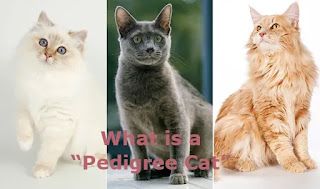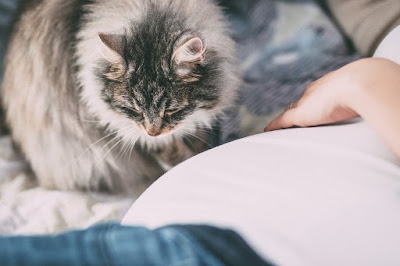What is a “Pedigree Cat”? - Best Pets 4 Home
What is a “Pedigree Cat”?
Not every cat or kitten registered under the aegis of a specific registry meets the breed standard for that pedigree registry. Technically the cat has a pedigree cat of the stated breed, but it is worth knowing how you are investing your money.
-Reputable breeders take great care and pride in meeting their breed standards and ensuring that their kittens are well-raised and socialized. This makes all the difference to the temperament of your pet, and the way that they are going to behave, as well as their longevity and health. Poorly raised kittens make inferior pets, and end up costing a fortune in vet bills. More often than not, reputable breeders have long waiting lists, comprised of people willing to wait for a pet because they know the risks of getting one from an inferior start in life. One of our kitten-owners spent £4000 in vet bills for a pedigree Russian Blue kitten who died after only a few weeks of ownership, breaking the family’s heart. Losing a pet is often a much more difficult emotional situation than anticipated, and it pays to ensure that you invest in a way to avoid death as an early outcome.
The best way to explain what a pedigree-registered kitten is is to define the function of a Pedigree Registry.
A feline pedigree registry is an organization, sometimes national, sometimes international, which registers breeding cats and their offspring, and holds in their archives the genealogies of previous ancestors of those cats. The registry issues prefixes and/or suffixes that are registered to specific breeders, and which are affixed to the names of each kitten whose pedigree is registered with that particular registry. Sometimes breeders can register a prefix or suffix with several different registries, but sometimes the same breeder will have a different prefix or suffix in different registries.
Registries also hold the records for a breed standard, with a defined “standard of points” allocated to each breed that is accepted within that particular registry. -Not all registries accept all breeds of cats or even certain aspects of certain breeds.
Registries are responsible for licensing cat shows organized by cat clubs that agree to abide by the standards set by a particular registry. Registries also ratify the training of cat judges, who must learn to handle cats at cat shows, and who are conversant with the standard of points of each different breed within their registry. Each pedigree cat is judged against a set standard of points and graded according to how well it conforms to the points in their standard.
To complicate matters, each registry is a law unto itself, and each one has different regulations applying to their members, which breeds of cats they accept to register, and how each breed standard is defined. The World Cat Congress was established in 1994 to promote co-operation and feline welfare amongst all world pedigree registries.
Many breeds have defining features or coats which make them immediately recognizable. The Siamese has a distinctively “pointed” coat pattern, the Persian has long hair and a flattened nose, and so on. Many breeds come in blue, with Short Hair: The Chartreux, the Korat, The British Shorthair, the Russian Blue, the Burmese, and the Oriental Shorthair just to mention a few. All of these breeds should be immediately distinguished from each other, using their different standards of points.
However, in the 19th century, at the very beginning of the Cat Fancy, many clubs sprang up all around Britain, and each club had its own version of what constituted a breed. Long Haired cats were considered very special indeed, and somewhere along the road to the first pedigree registrations, orange eyes were adopted across the UK as being the only way to distinguish a “pedigree” cat. That is a cat that has been born to specific parents, and which has specific matings planned for it, and which will go on to produce kittens that meet a specific and standardized appearance. So the Russian Blue cat, with their distinctive green eyes, immediately fell foul of the first rule for eye color, and many crossings and “improving” were done to reach the desired orange eyes.
The largest British feline pedigree registration is the General Council of the Cat Fancy (GCCF). The most prominent pedigree registry in use across Europe is the French “Fédération Internationale Féline” (FIFé). Mainly used in Eastern and Central Europe, the World Cat Federation (WCF), has largely adopted the GCCF appearance to their Russian Blues. Across Northern America, and rapidly gaining popularity across Europe and the UK is The International Cat Association (TICA); although The Cat Fanciers Association (CFA) is gaining momentum across Asia and Europe from its origin in North America.






